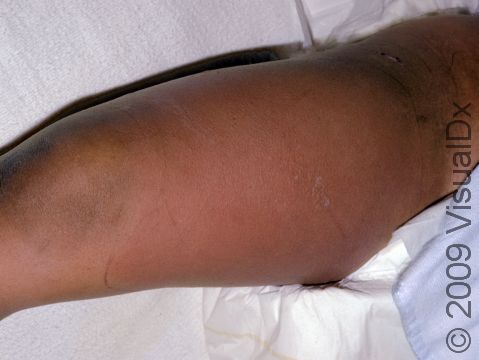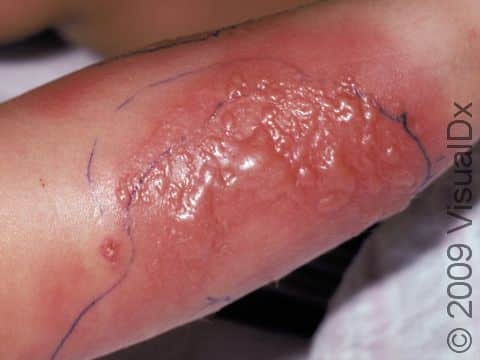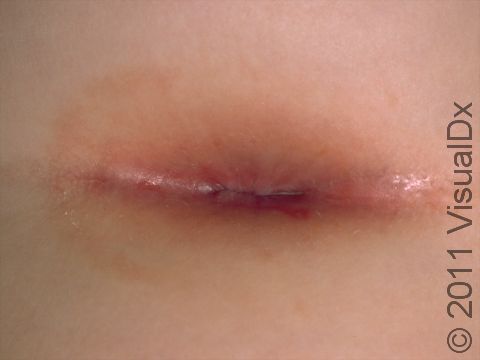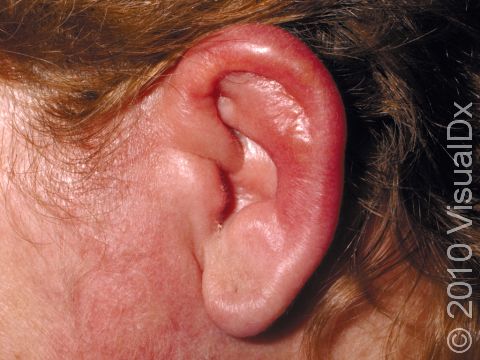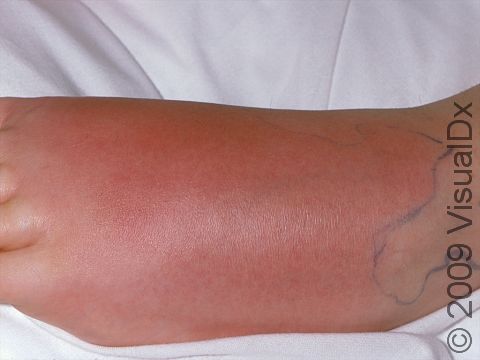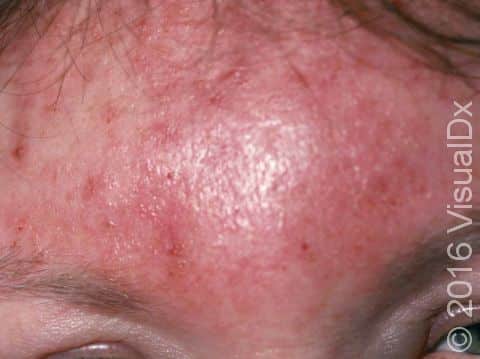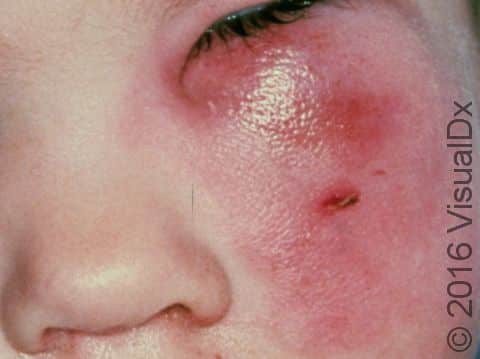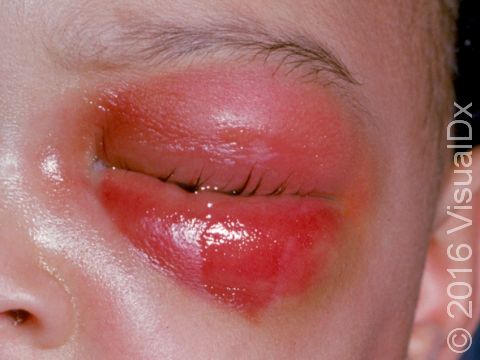Cellulitis
Cellulitis is an infection of the deeper skin tissue, most often caused by the bacteria Staphylococcus (“staph”) and Streptococcus (“strep”). These bacteria invade the skin through small cracks (fissures), causing sudden skin redness, swelling, and warmth in an area of the skin. Cellulitis often occurs with fever and chills.
If the infection goes untreated too long, cellulitis can result in abscesses (swollen, warm, tender lumps filled with pus) or the bacteria can spread into the bloodstream (bacteremia). However, most cellulitis heals after treatment with antibiotics.
Who's At Risk?
Cellulitis can occur in people of all ages, races / ethnicities, and sexes.
In children, cellulitis usually develops 1-2 days following a wound to the skin. Other factors that can increase the risk of developing cellulitis include:
- Diabetes.
- Lymphedema.
- Long-term (chronic) lower leg swelling (edema).
- Athlete’s foot (tinea pedis).
- Bites from insects, animals, or other humans.
- Obesity.
- Weakened immune systems due to illness or medication.
Signs & Symptoms
The most common locations for cellulitis include the:
- Lower legs.
- Arms or hands.
- Face.
Cellulitis often initially appears as slightly inflamed skin. The affected skin quickly becomes swollen, warm, and tender, and the affected area increases in size as the infection spreads. In lighter skin colors, the area may be any shade of pink or red. In darker skin colors, the redness may be harder to see, or it may appear more purple or dark brown. Occasionally, red streaks may radiate outward from the cellulitis. Vesicles (small blisters) or bullae (pus-filled lesions larger than a thumbnail) may be present.
Cellulitis may occur with swollen lymph nodes. Fever and chills are common.
Self-Care Guidelines
There are no self-care treatments for cellulitis. See your child’s medical professional immediately or take the child to urgent care or the emergency room. If an arm or leg is involved, raising (elevating) the affected body part can help reduce or prevent swelling.
Treatments
Although your child’s medical professional may easily diagnose cellulitis, they may want to order other procedures such as blood tests or cultures of any fluid or pus from the area. While waiting for the results from a bacterial culture, the medical professional may want to start the child on an antibiotic to fight the most common bacteria that cause cellulitis. Once the final culture results have returned, they may change the antibiotic, especially if your child is not improving on the one initially prescribed.
Mild cases of cellulitis in otherwise healthy people can be treated on an outpatient basis with oral antibiotic pills or syrups. Common oral antibiotics that are used to treat cellulitis include:
- Cephalexin (eg, Keflex).
- Dicloxacillin.
- Trimethoprim-sulfamethoxazole (eg, Bactrim).
- Clindamycin (eg, Cleocin).
However, ill-appearing children who have other illnesses or who have cellulitis on the face may need to be admitted to the hospital for observation and so they can receive injected (intravenous) antibiotics. Common intravenous antibiotics used in hospitals to treat cellulitis include:
- Vancomycin (eg, Firvanq, Vancocin).
- Cefazolin (eg, Claforan).
- Nafcillin.
- Oxacillin.
- Linezolid (eg, Zyvox).
If your child’s medical professional prescribes antibiotics, be sure the child takes the full course of treatment. In addition to prescribing antibiotics, they will likely want to make sure that your child has no other medical problems.
Visit Urgency
If your child develops a painful, warm, enlarging area on the skin that is red or darker than the surrounding skin and tender to the touch, see their medical professional as soon as possible. If your child also has fever and chills or if the area is on the child’s face, you should take them to urgent care or the emergency room.
If your child is currently being treated for a skin infection that has not improved after 2-3 days of antibiotics, return to their medical professional.
References
Bolognia J, Schaffer JV, Cerroni L. Dermatology. 4th ed. Philadelphia, PA: Elsevier; 2018.
James WD, Elston D, Treat JR, Rosenbach MA. Andrew’s Diseases of the Skin. 13th ed. Philadelphia, PA: Elsevier; 2019.
Kang S, Amagai M, Bruckner AL, et al. Fitzpatrick’s Dermatology. 9th ed. New York, NY: McGraw-Hill Education; 2019.
Paller A, Mancini A. Paller and Mancini: Hurwitz Clinical Pediatric Dermatology. 6th ed. St. Louis, MO: Elsevier; 2022.
Last modified on June 14th, 2024 at 10:36 am
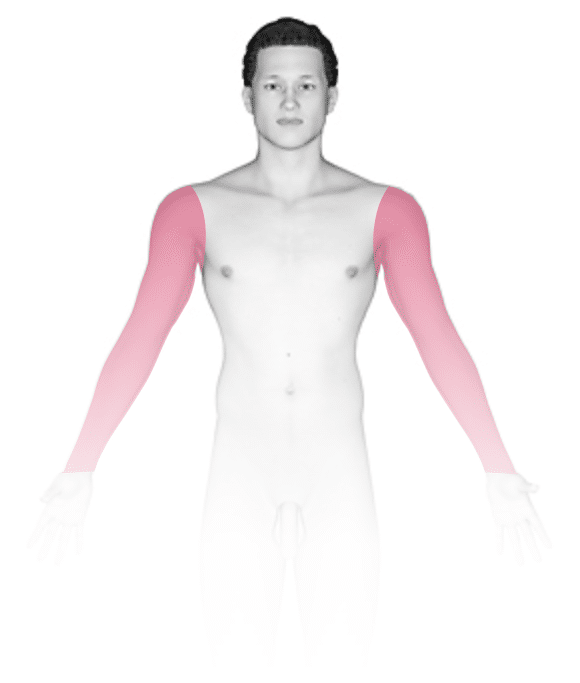
Not sure what to look for?
Try our new Rash and Skin Condition Finder
